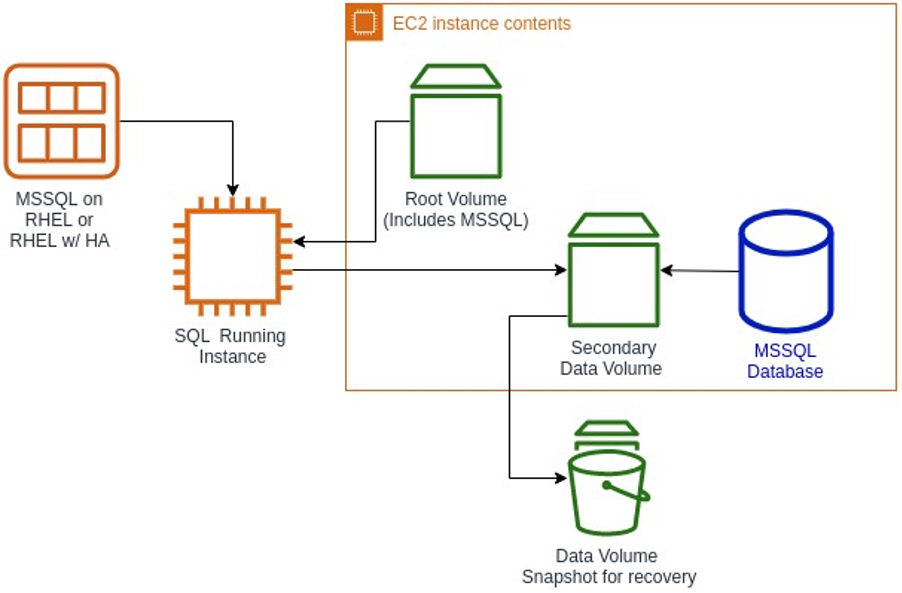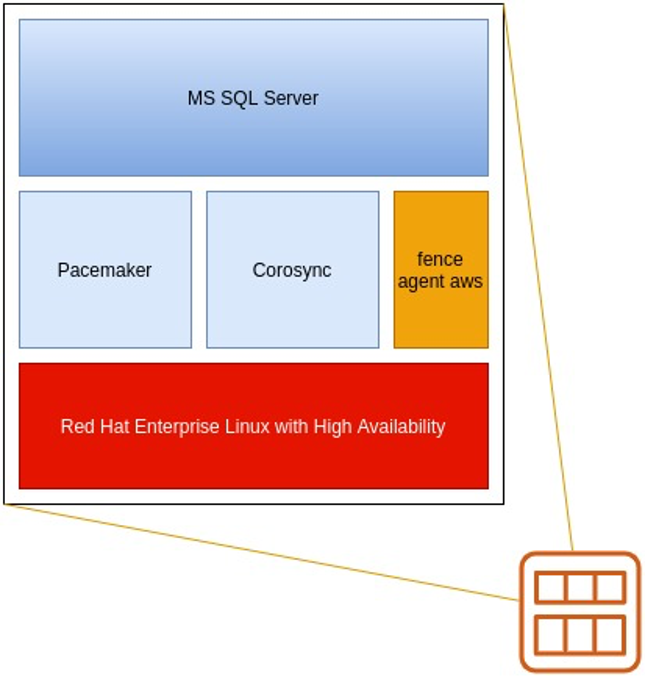AWS Feed
Understanding Amazon Machine Images for Red Hat Enterprise Linux with Microsoft SQL Server

This post is written by Kumar Abhinav, Sr. Product Manager EC2, and David Duncan, Principal Solution Architect.
Customers now have access to AWS license-included Amazon Machine Images (AMI) for hosting their SQL Server workloads with Red Hat Enterprise Linux (RHEL). With these AMIs, customers can easily build highly available, reliable, and performant Microsoft SQL Server 2017 and 2019 clusters with RHEL 7 and 8, with a simple pay-as-you-go pricing model that doesn’t require long-term commitments or upfront costs. By switching from Windows Server to RHEL to run SQL Server workloads, customers can reduce their operating system licensing costs and further lower total cost of ownership. This blog post provides a deep dive into how to deploy SQL Server on RHEL using these new AMIs, how to tune instances for performance, and how to reduce licensing costs with RHEL.
Overview
The RHEL AMIs with SQL Server are customized for the following editions of SQL Server 2019 or SQL Server 2017:
- Express/Web Edition is an entry-level database for small web and mobile apps.
- Standard Edition is a full-featured database designed for medium-sized applications and data marts.
- Enterprise Edition is a mission-critical database built for high-performing, intelligent apps.
To maintain high availability (HA), you can bring the same HA configuration from an on-premises Enterprise Edition to AWS by combining SQL Server Availability Groups with the Red Hat Enterprise Linux HA add-on. The HA add-on provides a light-weight cluster management portfolio that runs across multiple AWS Availability Zones to eliminate single point of failure and deliver timely recovery when there is need.
These AMIs include all the software packages required to run SQL Server on RHEL along with the most recent updates and security patches. By removing some of the heavy lifting around deployment, you can deploy SQL Server instances faster to accommodate growth and service events.
The following architecture diagram shows the necessary building blocks for SQL Server Enterprise HA configuration on RHEL.

To build the RHEL 7 and RHEL 8 AMIs, we focused on requirements from the Red Hat community of practice for SQL Server, which includes code, documentation, playbooks, and other artifacts relating to deployment of SQL Server on RHEL. We used Amazon EC2 Image Builder for installing and updating Microsoft SQL Server. For custom configuration or for installing any additional software, you can use the base machine image and extend it using EC2 Image Builder. If you have different, requirements, you can build your own images using the Red Hat Image Builder.
Tuning for virtual performance and compatibility with storage options
It is a common practice to apply pre-built performance profiles for SQL Server deployments when running on-premises. However, you do not need to apply the operating system performance tuning profiles for SQL Server to optimize the performance on Amazon EC2. The AMIs include the virtual-guest tuning from Red Hat along with additional optimizations for the EC2 environment. For example, the images include the timeout for NVMe IO operations set to the maximum possible value for an experience that is more consistent with the way EBS volumes are managed. Database administrators can further configure workload specific tuning parameters such as paging, swapping, and memory pressure using the Microsoft SQL Server performance best practices guidelines.
SQL Server availability groups help achieve HA and improve the read performance of your database cluster. However, this approach only improves availability at the database layer. RHEL with HA further improves the availability of a SQL Server cluster by providing service failover capabilities at the operating system layer. You can easily build a highly available database cluster as shown in the following figure by using the RHEL with SQL Server and HA add-on AMI on an instance of their choice in multiple Availability Zones.

When it comes to storage, AWS offers many different choices. Amazon Elastic Block Storage (EBS) offers Provisioned IOPS volumes for specific performance requirements, where you know you need a specific level of performance required for the database operations. Provisioned IOPS are an excellent option when the general-purpose volume doesn’t meet your requirements of levels of I/O operations necessary for your production database. EBS volumes add the flexibility you need to increase your volume storage space size and performance through API calls. With Amazon EBS, you can also use additional data volumes directly attached to your instance or leverage multiple instance store volumes for performance targets. Volume IOPS are optimized to be sustainable even if they climb into the thousands, and your maximum IOPS does not decrease.

Provisioning only one large root EBS volume for the database storage and sharing that with the operating system and any logging, management tools, or monitoring processes is not a well-architected solution. That shared activity reduces the bandwidth and operational performance of the database workloads. On the other hand, using practices like separating the database workloads onto separate EBS volumes or leveraging instance store volumes work well for use cases like storing a large number of temp tables. By separating the volumes by specialized activities, the performance of each component is independently manageable. Profile your utilization to choose the right combination of EBS and instance storage options for your workload.
Lower Total Cost of Ownership
Another benefit of using RHEL AMIs with SQL Server is cost savings. When you move from Windows Server to RHEL to run SQL Server, you can reduce the operating system licensing costs. Windows Server virtual machines are priced per core and hence you pay more for virtual machines with large numbers of cores. In other words, the more virtual machine cores you have, the more you pay in software license fees. On the other hand, RHEL has just two pricing tiers. One is for virtual machines with fewer than four cores and the other is for virtual machines with four cores or more. You pay the same operating system software subscription fees whether you choose a virtual machine with two or three virtual cores. Similarly, for larger workloads, your operating system software subscription costs are the same no matter whether you choose a virtual machine with eight or 16 virtual cores.
In addition, with the elasticity of EC2, you can save costs by sizing your starting workloads accordingly and later resizing your instances to prevent over provisioning compute resources when workloads experience uneven usage patterns, such as month end business reporting and batch programs. You can choose to use On-Demand Instances or use Savings Plans to build flexible pricing for long-term compute costs effectively. With AWS, you have the flexibility to right-size your instances and save costs without compromising business agility.
Conclusion
These new RHEL with SQL Server AMIs on Amazon EC2 are pre-configured and optimized to reduce undifferentiated heavy lifting. Customers can easily build highly available, reliable, and performant database clusters using RHEL with SQL Server along with the HA add-on and Provisioned IOPS EBS volumes. To get started, search for RHEL with SQL Server in the Amazon EC2 Console or find it in the AWS Marketplace. To learn more about Red Hat Enterprise Linux on EC2, check out the frequently asked questions page.